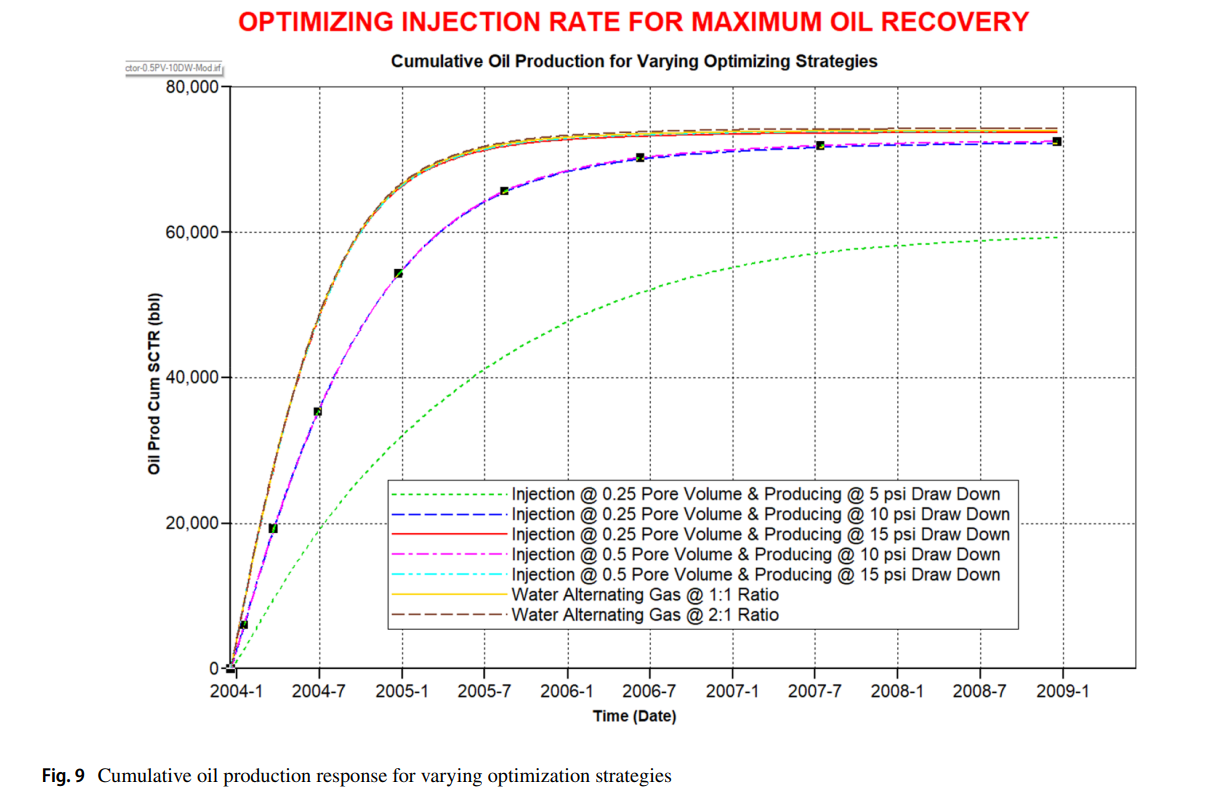Investigating the efects of fault reactivation and CO2 migration during combined CO2‑EOR and sequestration within a mature oil reservoir
摘要
对CO2-EOR和地质碳封存过程的联合研究被认为是减少大气中CO2排放的可行解决方案,同时可提高老油田的产量。然而,组合工艺的实用性取决于确定最佳入注入压力,以最大限度地应用这两种方法。此外,这两项作业的成功还取决于边界断层的动态密封能力,以允许油气聚集和捕获注入的二氧化碳。因此,本研究的目标是同时优化CO2-EOR与CO2封存相结合的实施,并研究断层活化及其对CO2运移的影响。 研究是从两个场景着手;第一是确定组合工艺的最佳注入压力,主要关注最大限度地提高老油田的采收率。结果表明,在722 Scf/天的最佳注入速度下,最大累积采出量为73.7090 Mbbls。第二种情况是,在722 Scf/天的预定注入速度下,调查注入诱发的断层活化发生的可能性。 进行了反映断层再活化特征的模拟,研究了断层开启应力、再活化时间、水力裂缝渗透率、裂缝扩展长度和泄漏之间的关系。总之,CO2-EOR和封存相结合的可行性取决于断层再活化的技术细节。在某些情况下,再活化会增加可利用的储存容量,而在其他情况下,它会导致注入的二氧化碳泄漏。
关键词:断层活化·CO2封存·提高采收率·CO2运移·BB模型裂缝渗透率理论
Abstract
The investigation into the combined processes of CO2-EOR and geologic carbon sequestration was seen to be a viable solution to reducing CO2 emissions from the atmosphere, while boosting production from mature oil felds. However, the practicality of the combined process hinges on the determination of an optimum injection pressure to maximize the application of both methods. In addition, the success of these two operations is also contingent upon the dynamic sealing capacity of bounding faults, to allow hydrocarbon accumulation and trapping of injected CO2. Consequentially, the goal of this research is to optimize the implementation of combined CO2-EOR with simultaneous CO2 sequestration and investigate the enhancing diminishing aspects of fault reactivation and CO2 migration.
The study was approached from two scenarios; the first was the determination of an optimum injection pressure for the combined process, with the main focus on maximizing recovery from a mature oil field. The results saw a maximum cumulative recovery of 73.7090 Mbbls being facilitated at an optimal injection rate of 722 Scf/day. The second scenario entailed the investigation of the occurrence or lack thereof, of injection induced fault reactivation at this predetermined injection rate of 722 Scf/day.
Simulations reflecting the characteristics of fault reactivation were conducted, and are indicative of relations between fault opening stress, reactivation time, hydraulic fracture permeability, fracture propagation length, and leakage. Conclusively, the viability of the combination of CO2-EOR and sequestration were seen to depend on the technicalities of fault reactivation. In some cases, reactivation resulted in increases of accessible storage capacity, whereas, in other instances, it led to the leakage of the injected CO2.
Keywords: Fault reactivation · CO2 sequestration · Enhanced oil recovery · CO2 migration · Mature oil reservoir · Barton– Bandis fracture permeability theory



